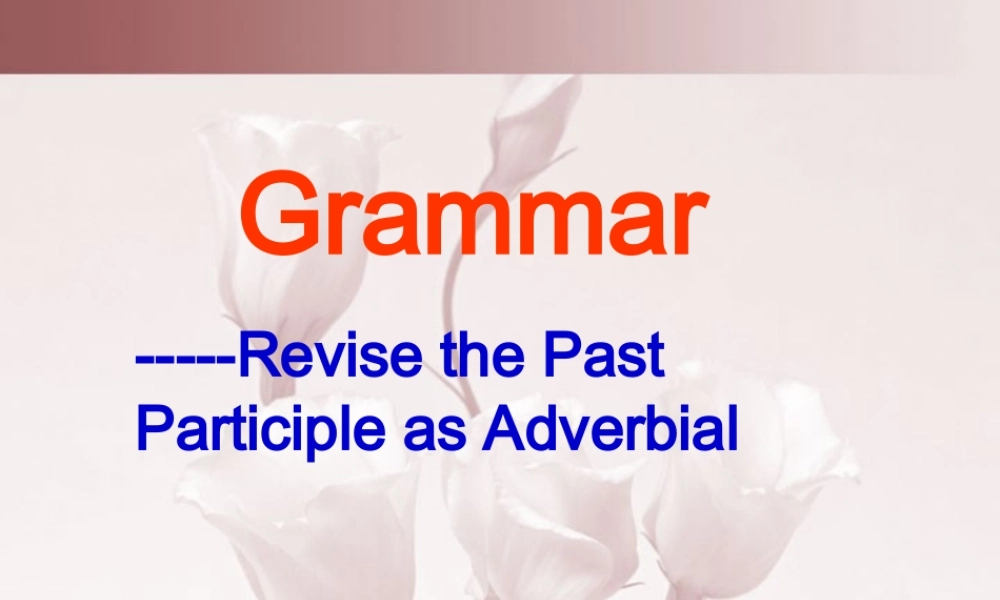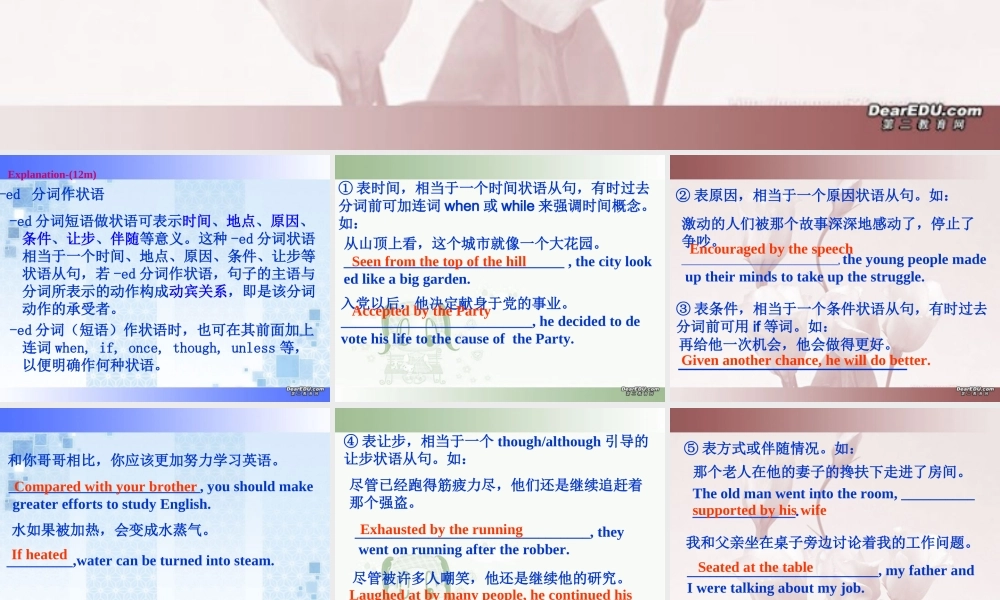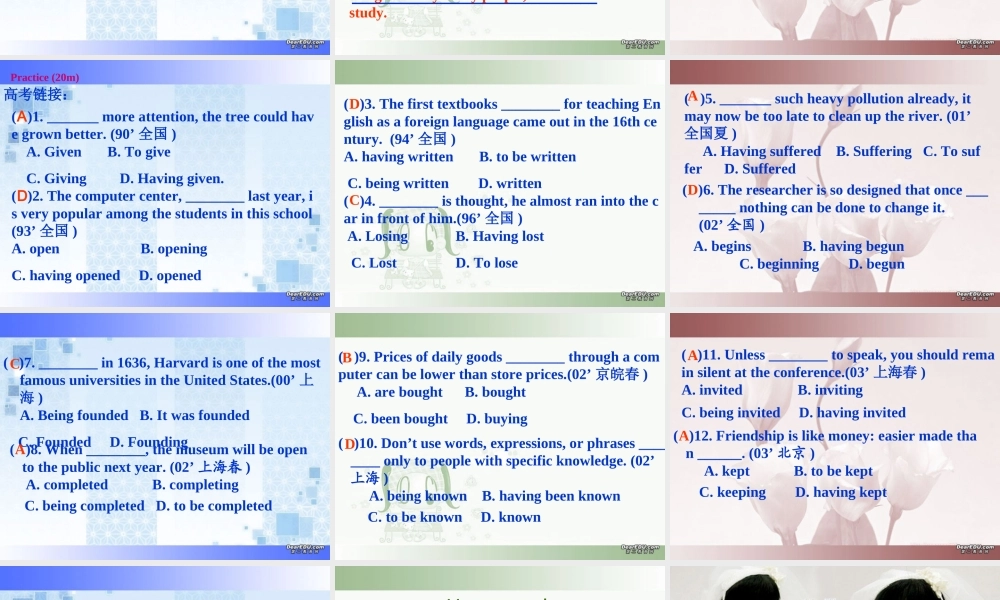Grammar-----Revise the Past Participle as Adverbial-ed 分词作状语-ed 分词短语做状语可表示时间、地点、原因、条件、让步、伴随等意义。这种 -ed 分词状语相当于一个时间、地点、原因、条件、让步等状语从句,若 -ed 分词作状语,句子的主语与分词所表示的动作构成动宾关系,即是该分词动作的承受者。-ed 分词(短语)作状语时,也可在其前面加上连词 when, if, once, though, unless 等,以便明确作何种状语。Explanation-(12m) ① 表时间,相当于一个时间状语从句,有时过去分词前可加连词 when 或 while 来强调时间概念。如:从山顶上看,这个城市就像一个大花园。______________________________ , the city looked like a big garden. Seen from the top of the hill入党以后,他决定献身于党的事业。__________________________, he decided to devote his life to the cause of the Party.Accepted by the Party ② 表原因,相当于一个原因状语从句。如: 激动的人们被那个故事深深地感动了,停止了争吵。 ______________________________________, the young people made up their minds to take up the struggle. Encouraged by the speech ③ 表条件,相当于一个条件状语从句,有时过去分词前可用 if 等词。如:再给他一次机会,他会做得更好。____________________________ Given another chance, he will do better. 和你哥哥相比,你应该更加努力学习英语。 __________________________, you should make greater efforts to study English.水如果被加热,会变成水蒸气。 _________,water can be turned into steam. Compared with your brotherIf heated④ 表让步,相当于一个 though/although 引导的让步状语从句。如:尽管已经跑得筋疲力尽,他们还是继续追赶着那个强盗。________________________________, they went on running after the robber. Exhausted by the running尽管被许多人嘲笑,他还是继续他的研究。______________________________ Laughed at by many people, he continued his study. ⑤ 表方式或伴随情况。如: 那个老人在他的妻子的搀扶下走进了房间。The old man went into the room, ________________________.supported by his wife我和父亲坐在桌...



